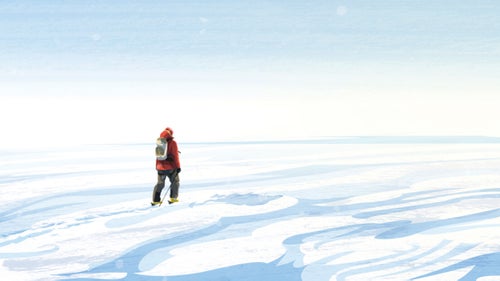Working in Antarctica Was Mindless Boredom. Until I Found a Pair of Skis.
Right out of college, Leath Tonino traveled to Antarctica to experience the frozen landscape of his childhood exploration heroes. The daily routine was a bit dull—shoveling snow for the U.S. government—until a pair of skinny skis unlocked the potential of the vast snowy expanse.
Heading out the door? Read this article on the Outside app available now on iOS devices for members! Download the app.
My favorite spot on the East Antarctic plateau, the planet’s highest, driest, coldest, windiest, deadest desert, is the Love Shack—an uninsulated plywood box the size of a modest bathroom, painted black to absorb the 24-hour sunlight, furnished with a chair, a desk, a cot, and a pile of coarse cotton blankets. Rumor has it that researchers and laborers at the Amundsen-Scott South Pole Station, which sits about two miles away, occasionally require a refuge for romance, something I tried not to think about when I was in there. Like a prep school or military base, the station is insular, a cheek-to-jowl compound of laboratories, workshops, dorms, and supply depots, and the 250 inhabitants during the austral summer are hard-pressed to find privacy sufficient for their (ahem) needs.
In my case—that of a 22-year-old Vermonter who in 2008 ditched his wonderful college girlfriend to chase the ineffable at the bottom of the globe—the Love Shack was a strictly celibate hermitage: pencil, notebook, a couple cans of Speight’s Gold Medal Ale, immense quiet interrupted by chattering teeth. I frequently spent Saturday evenings shacked up with only amorphous breath clouds for company, shivering and gazing through the plexiglass window, simultaneously contemplating the sprawling abiotic wasteland and—beneath thermal undies, a fleece sweater, and a fat red fur-ruffed parka—my own navel. The idea was to space way out and space way in. Touch the edge, the border where inner and outer converge. Take some solo time with The Ice.
But I’m getting ahead of myself.





